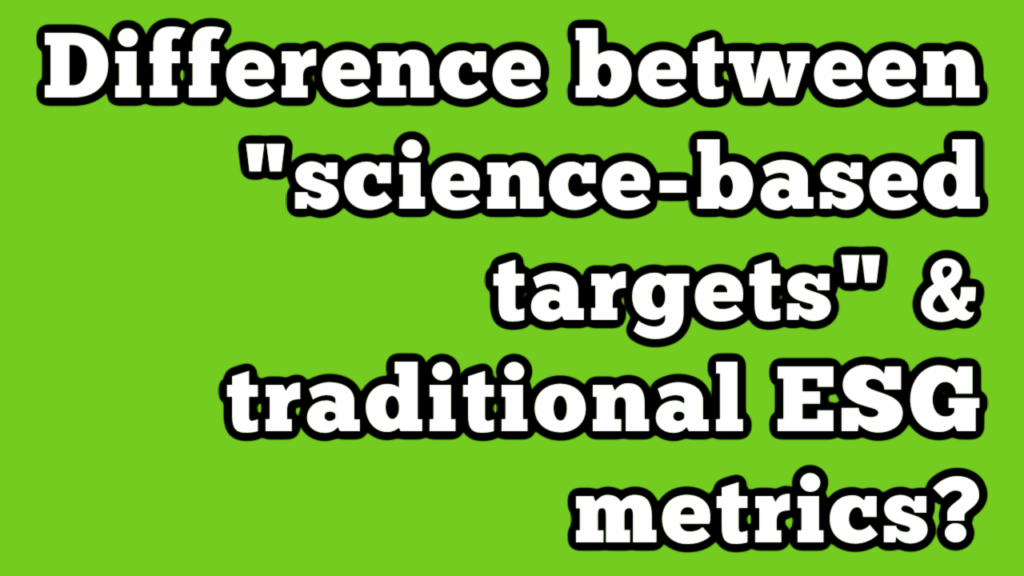Difference between “science-based targets” and traditional ESG metrics?

– SBTs differ from traditional ESG approaches, in that they explicitly integrate global ‘guardrails’ for biodiversity metrics. Traditional ESG measures focus on incremental improvement.
– The SBTN is developing its methodologies for release next year. Some have lodged complaints about what they’re seeing.
You can start with this guide from “Science-Based Targets” that came out in April entitled “How to Guide for Setting Science-Based Targets.” Here is an article from “Preventable Surprises” that reflects a dialogue about how investors can help prevent biodiversity loss. Here’s the intro:
The Science Based Targets Network (SBTN) is currently developing the methodologies for companies and cities to set science-based targets – measurable, actionable, and time-bound objectives, based on the best available science, that allow actors to align with Earth’s limits and societal sustainability goals.
SBTs differ from traditional ESG approaches, in that they explicitly integrate global ‘guardrails’ for biodiversity metrics for a ‘safe and just’ future identified by the Earth Commission, which David Obura mentions in his Provocation. By contrast, traditional ESG measures focus on incremental improvement.
The methodologies under development and targeted for release in 2022 will cover nature broadly and the drivers of nature loss, across land, freshwater, ocean realms and including both biodiversity and nature’s contributions to people. As a first step, SBTN released initial corporate guidance. Companies and investors are encouraged to read this guidance, take steps to prepare by assessing their value chain-wide impacts and dependencies on nature, join the SBTN corporate engagement program if they are motivated to be involved in co-creation, and take no-regrets actions for nature in the meantime.
As the SBTN considers its methodologies to be released next year, some people have lodged complaints about what they’re seeing. Here is one such compliant from Bill Baue. Bill raises the question why SBTi recommends AGAINST a methodology that aligns with the IPCC Scenario with the lowest temperature goal (SSP1-1.9 with a temperature goal of 1.345°C) and recommends FOR a methodology that can only align with the 1.5°C temperature goal for a handful of sectors, but not the whole economy.
